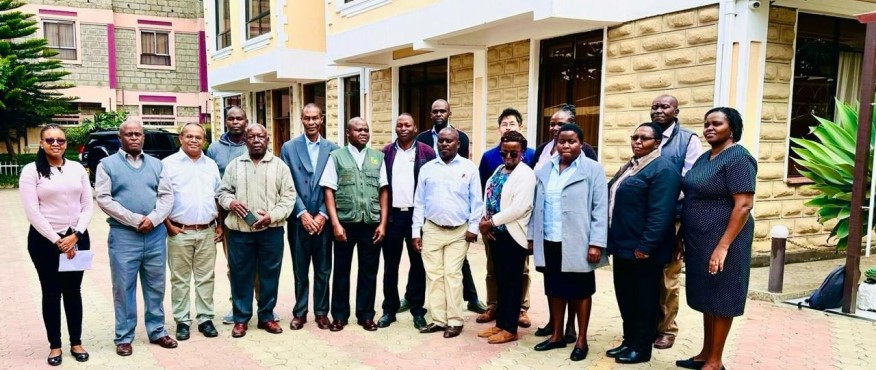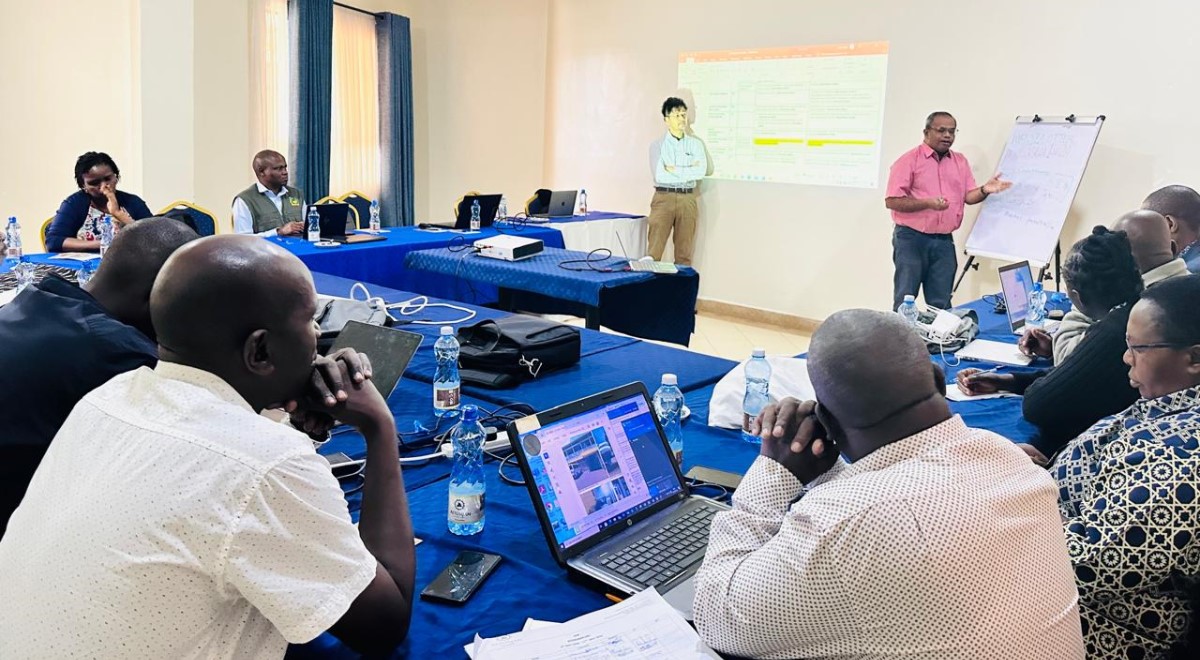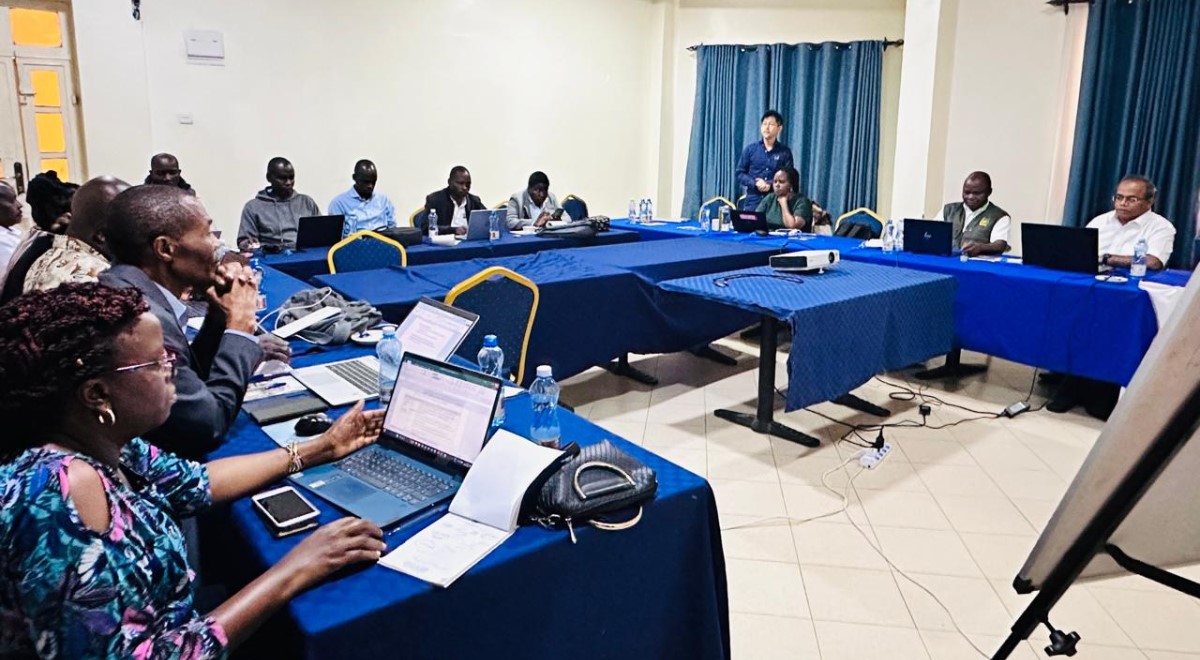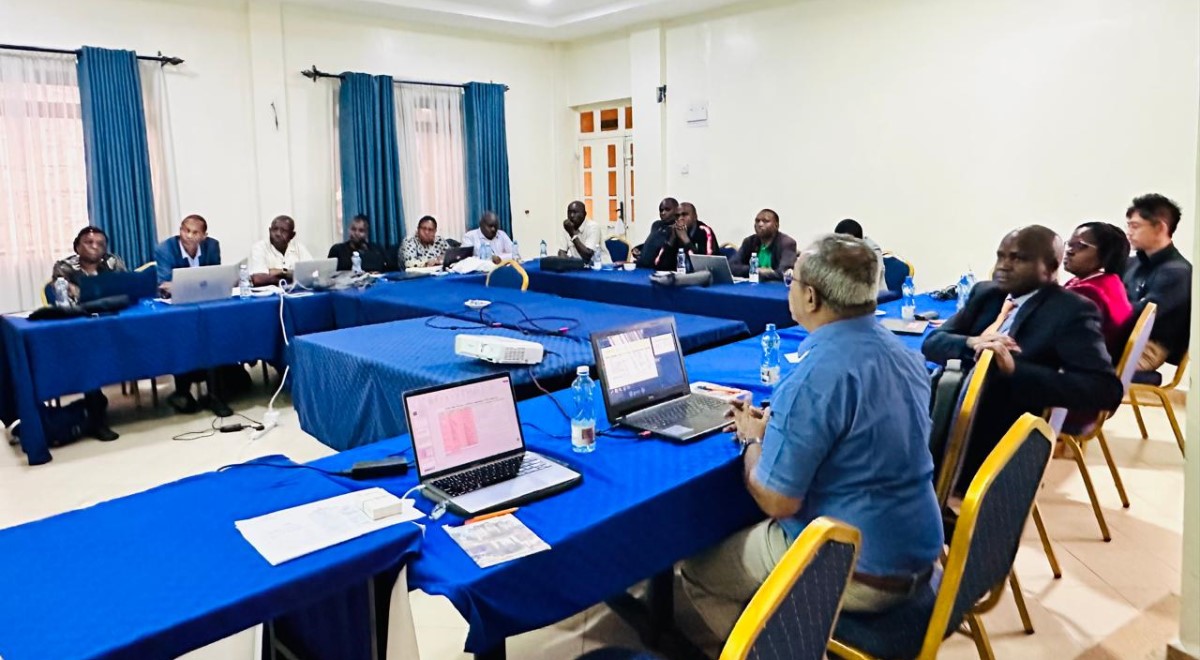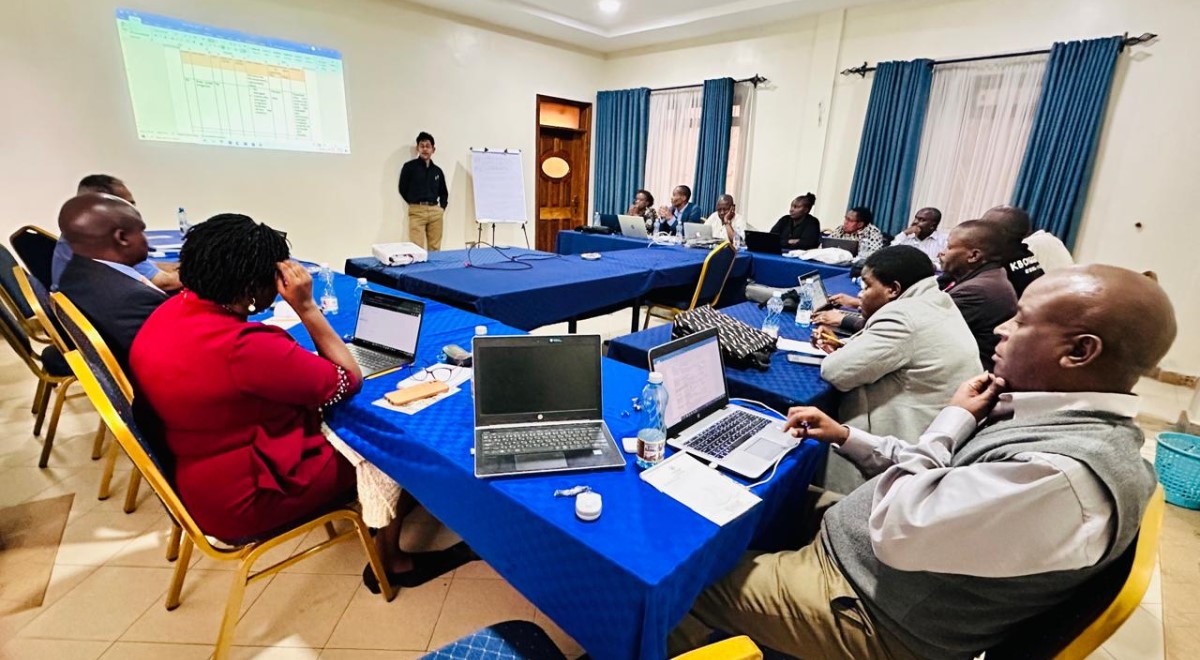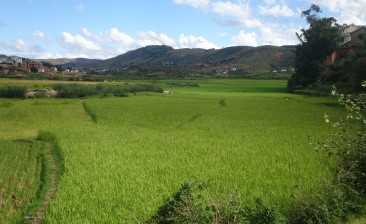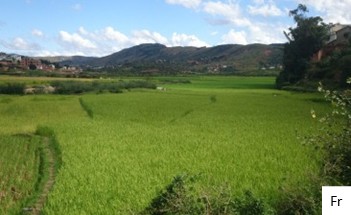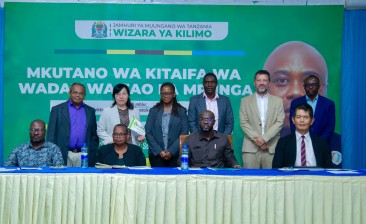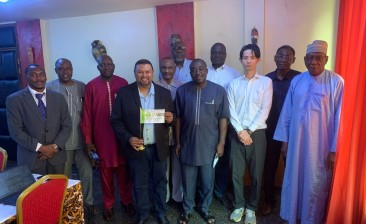Kenya, May 2024
Kick-Off Meeting on Monitoring & Evaluation of NRDS-2 on 8 – 10 May 2024
Kenya intends to achieve rice self-sufficiency by setting an ambitious target of 7-fold increase in paddy production under second phase of NRDS-2 (2019-2030). Although the local paddy production has been rising since 2019, importation of rice has reached historic heights in 2023; putting pressure on attaining NRDS-2 goal. To enable monitoring and evaluation of NRDS-2 implementation in Kenya, CARD Secretariat organized a study in June 2022 to establish baselines for key indicators for the rice sector development. To track progress on these indicators in the current year, the NRDS Focal point requested CARD Secretariat to organize a workshop. The objectives of this workshop are to (i) help taskforce members understand CARD’s M&E approach and (ii) reach a consensus on the M&E indicators and data collection protocols, and (iii) review the appropriation of concept notes that were developed by the NRDS taskforce in 2020.
Besides providing technical assistance towards kicking-off the M&E process; the reporter, while in Kenya, also witnessed the usage of solar photovoltaic pumps by Kenyan farmers to assess its potential as an emerging best practice for rice farming in CARD member countries.
Kick off meeting on M&E in Kenya
The meeting was organized at Astorian Hotel, Naivasha between 8th and 10th of May. About 13 taskforce members representing various academic, research and developmental institutions and Ministry of Agriculture and Livestock Development (MoALD) participated. JICA Advisor to MoALD, Mr. Takanori Satoyama and M&E Advisor (CARD) Dr. Lillian Muasa were also present throughout the workshop.
The reporter first presented the current trends in rice production and importation in Kenya using FAO data. The analyses revealed that Kenya’s self-sufficiency rate has decreased since 2020 due to Government of Kenya’s policy decisions on duty for rice imports. While the national average rice yield level has been steadily improving (from 6.09 t/Ha in 2020 to 6.22 t/Ha in 2022), the area under domestic rice production has not seen the increment as envisaged under the NRDS-2. Dr. Lillian Muasa presented the background information on the 13 standard indicators that CARD suggests to all its member countries. Major outputs from the meeting are elaborated below: –
Consensus on indicators and data collection protocols
The baseline report (2022) of Kenya had established data for 12 indicators (4 overall, 2 each for Resilience, Industrialization, Competitiveness, and Empowerment). Upon reviewing the definition and data collection methodologies for each of these 12 indicators; the participants agreed that while data on most of them could be collected through secondary sources, some would require primary data collection method. Through mutual agreement, the taskforce has assigned responsibilities amongst themselves on collecting the data from both primary and secondary sources, as outlined in the table below:
| Code | Indicator | Unit | Data Source | Responsibilities – for data collection | |
| Who | When | ||||
| O1 | Quantity of Paddy Produced | tons | Statistics Unit, MoALFC, NIA
(Secondary data)
|
Jane, Vincent-NIA | 17-May |
| O2 | Total area harvested | Ha | MoALFC
(Secondary data) |
||
| O3 | Yield
|
t/Ha | O1/O2
(Secondary) |
||
| O4 | Self-Sufficiency rate
|
% | Qty of paddy produced (O1) | ||
| MTIED (Ministry of Trade, Industry &Enterprise Development)
(secondary data) |
Mr. Calistus
AFA |
17-May | |||
| R1 | Area under irrigation | Ha | IA managed
Community managed irrigation schemes across the country |
Vincent
Jane |
17-May |
| R2 | Quantity of seeds of locally preferred varieties with resilient characteristics | tons | Secondary data |
Jacob, KEPHIS |
17-May |
| I1 | Level of industrial milling capacity | (%) | Secondary data | Dr. Wilson Oyange | 31-May |
| I2 | Level of mechanization in production | Units | Mechanization Dept. Kilimo | Satoyama | 31-May |
| C1 | Share of local rice in the market
|
% | Retail shops in
Nairobi
Mombasa
Kisumu & Kakamega |
RIPP, Satoyama
Dr. Kimani
Profs. Onyango, Kanali |
By 1st week of June |
| C2 | Quantity of high-yielding variety seeds
Threshold: >6.4 t/Ha (main season) |
ton | KEPHIS | Jacob -KEPHIS | 17-May |
| E1 | Smallholder farmers’ accessibility to financial services
|
% | MRGM
NCBA bank through Greentec hub (Ahero, West Kano) Cooperative bank through cooperatives (Ahero, Bunyala)
AFC |
Dr. Oyange
Vincent-NIA
Mr. Calistus |
1st week of June
|
| E2 | Smallholder farmers’ accessibility to technical training and services | % | Sub-county Ag offices at
Ahero
Mwea |
Dr. Oyange
Vincent |
1st week of June |
| P | Retail price of locally produced and imported rice (milled)
|
K Sh
Or USD per Kg |
KAMIS – Kenya Integrated Agriculture Market Information System (not currently active)
OR Team survey (for C1) |
Jane
-same as C1- |
17-May
1st week of June |
Analyses of gaps in current interventions
The reporter explained how gaps in interventions along the rice value chain could be identified using a Sub-sector Intervention Element Matrix (SIEM). The participants provided information on the current interventions (on-going and on pipeline) that contributed the supply-side of the SIEM. Based on the strategic interventions outlined in the NRDS-2 and the current situation of the rice sector development, the taskforce members then prioritized the demand-side of the SIEM using color shades, where red to orange shades would imply very urgent interventions, yellow would represent important but not urgent type of interventions, and yellow to green would mean that the current interventions are somewhat sufficient. White cells would imply that although interventions in this category are important, they may not come under immediate prioritization.
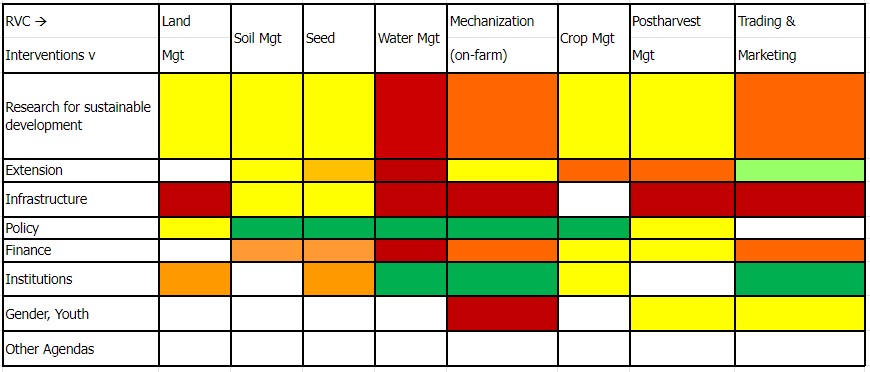
Review of concept notes on NRDS-2
In October 2020, the taskforce members formulated concept notes based on the major interventions proposed under their NRDS-2. A total of 8 concept notes were developed by the taskforce. The participants at this workshop were divided into 4 groups. Two concept notes were reviewed by each group. A group leader was assigned from amongst the group members to lead the discussions. Given the gap analyses made from the present situation, the members discussed on the relevance of the concept note and made suggestions on the changes that could be incorporated on the concept notes. The groups had noted the key messages from their discussions, using which they will be able to revise the concept notes at the next meeting (August).
Way forward
The taskforce members have agreed to collect the data and submit to the NRDS-2 Focal point by 1st week of June. The collected data will be analyzed and preparations for Annual Rice Sector Review Meeting will be carried out during next workshop between 7th and 9th of August 2024.
During Kick off meeting on M&E in Naivasha, Kenya
